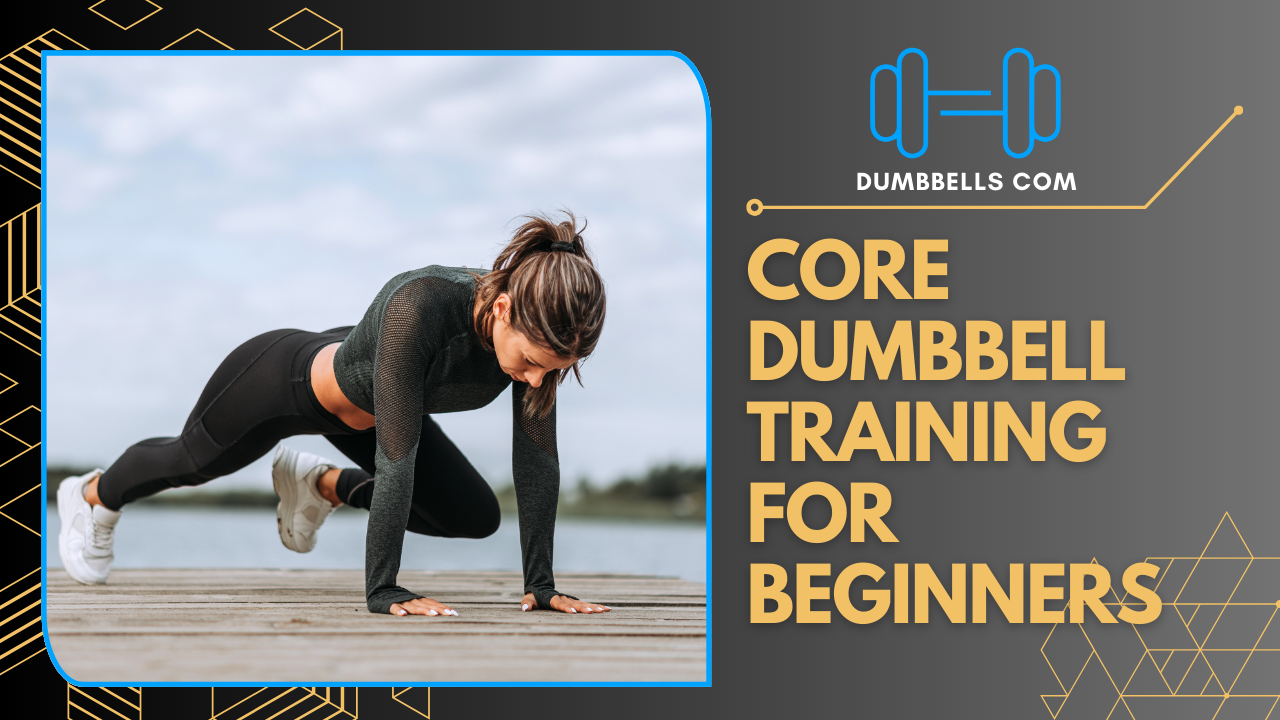Edited by: Jesse A Grund MS, CSCS, TSAC-F
Starting your fitness journey with core muscle training is both exciting and rewarding. Your core muscles are crucialfor nearly every movement, from daily activities to intense exercises. For beginners, incorporating dumbbells can enhance core workouts, adding resistance to build strength more efficiently.
This article will cover the basics of core training using dumbbells, including:
✔ What core muscles are
✔ Benefits of strengthening your core
✔ Beginner-friendly exercises
✔ Common mistakes to avoid
✔ A sample core workout plan
By the end, you’ll have a solid foundation to begin your core muscle training journey.
Understanding Core Muscles
The core consists of muscles in the abdomen, lower back, hips, and pelvis. These muscles play a vital role in stability, balance, and overall strength. Key core muscles include:
✔ Rectus Abdominis – The "six-pack" muscle, responsible for flexing the spine.
✔ Obliques – Located on the sides of the abdomen, assisting in twisting and bending movements.
✔ Transverse Abdominis – The deepest abdominal muscle, crucial for spine stabilization.
✔ Lower Back Muscles – Support the spine and help maintain posture.
A strong core is essential for:
✔ Posture and balance
✔ Lowering the risk of back injuries
✔ Improving strength and stability
✔ Enhancing everyday movements like bending and twisting
For an in-depth look at core anatomy, visit the ACE Blog on Core Anatomy.
Benefits of Strengthening Your Core
Building core strength goes beyond just achieving aesthetic abs. Here are key benefits:
✔ Improved Posture – A strong core keeps your spine aligned, reducing back pain and promoting better posture (Harvard Health, 2021).
✔ Better Balance and Stability – Core muscles help control movements, making daily tasks and athletic activities easier.
✔ Enhanced Athletic Performance – From lifting weights to running, a strong core improves efficiency in sports and exercise.
✔ Reduced Risk of Injury – Strengthening the core protects the lower back and joints, reducing injury risk (McGill, 2010).
For real-world benefits, check out Harvard Health’s Core Strengthening Guide.
Core Exercises for Beginners (Using Dumbbells)
Starting with beginner-friendly core exercises ensures proper form and progression. Here are some great options:
1. Russian Twists
✔ Sit on the floor, knees bent, feet flat.
✔ Hold a dumbbell with both hands at chest level.
✔ Lean back slightly, keeping your back straight.
✔ Twist right, then left, engaging your obliques.
✔ Perform 3 sets of 10-15 reps.
2. Standing Side Bends
✔ Stand with feet shoulder-width apart, holding a dumbbell in your right hand.
✔ Place your left hand on your hip for support.
✔ Bend sideways to your right, lowering the dumbbell toward your knee.
✔ Return to starting position and repeat.
✔ Perform 3 sets of 10-15 reps per side.
3. Dumbbell Plank Rows
✔ Start in a plank position, dumbbell in each hand.
✔ Keep your body straight, core engaged.
✔ Row the right dumbbell toward your hip.
✔ Lower and repeat on the left.
✔ Perform 3 sets of 10 reps per side.
4. Dumbbell Dead Bugs
✔ Lie on your back, arms extended, holding dumbbells.
✔ Lift your legs, knees at a 90-degree angle.
✔ Lower your right arm and left leg toward the floor.
✔ Return to start and switch sides.
✔ Perform 3 sets of 10 reps per side.
Common Mistakes to Avoid
Avoid these common errors to maximize results and prevent injuries:
❌ Bad Form – Maintain a neutral spine and engage your core to avoid back strain.
❌ Holding Your Breath – Exhale during effort, inhale during relaxation.
❌ Overtraining – Progress gradually to prevent strain or fatigue.
❌ Skipping Warm-Ups – Always warm up for 5-10 minutes to reduce injury risk.
❌ Neglecting Recovery – Rest days help muscles repair and grow.
For more tips, check out 5 Core Training Mistakes to Avoid.
Core Muscle Workout Plan for Beginners
Workout Routine
🔹 Warm-Up (5-10 mins)
✔ Light cardio (jogging, jumping jacks)
✔ Dynamic stretching
🔹 Core Workout (3 Sets Each)
✅ Dumbbell Side Bends – 10-12 reps per side
✅ Dumbbell Plank Rows – 8-10 reps per side
✅ Russian Twists – 10-15 reps
✅ Dumbbell Dead Bugs – 10 reps per side
🔹 Cool Down (5-10 mins)
✔ Stretching exercises focused on core muscles
Tips for Progression
✔ Increase Weight – Gradually increase dumbbell weight.
✔ Add Reps – Increase repetitions for better endurance.
✔ Try New Exercises – Challenge your core with advanced movements.
For more ab workouts, check out the Ultimate Dumbbell Ab Workout.
Safety Tips and Precautions
When starting core muscle training, prioritize safety:
✔ Warm Up – Prepares muscles for movement.
✔ Focus on Form – Avoid straining your back.
✔ Start Light – Use lighter dumbbells before progressing.
✔ Listen to Your Body – Stop if you feel sharp pain.
✔ Stay Hydrated – Water helps muscle function and recovery.
✔ Cool Down – Reduces muscle stiffness.
Final Thoughts & Next Steps
Incorporating dumbbells into core training helps build strength, stability, and endurance. Consistency is key—stick to your routine and gradually progress for long-term results.
✔ Understand core muscles and their function
✔ Practice beginner-friendly dumbbell exercises
✔ Avoid common mistakes to prevent injuries
✔ Follow a structured workout plan
✔ Prioritize safety and recovery
💪 Start training today! For more fitness resources, visit Dumbbells.com.
References
- Harvard Medical School. (2021). The Real-World Benefits of Strengthening Your Core. Retrieved from www.health.harvard.edu.
- McGill, S. M. (2010). Core Training for Injury Prevention. Journal of Strength & Conditioning Research, 24(10), 2857-2872.
- ACE Fitness. (2022). Understanding Core Anatomy. Retrieved from www.acefitness.org.
